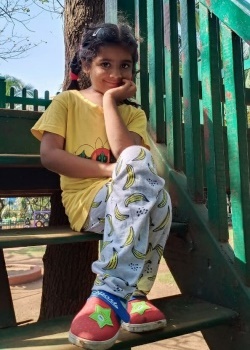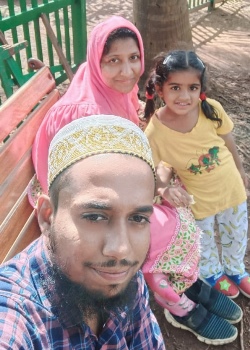You are here
First Cord Blood Transplant from Community Bank
LifeCell International of India operates the world’s first Community Cord Blood Bank, a new banking model where parents pool their children’s cord blood units to provide protection to the community of participants. Now, LifeCell has released the first transplant from this community bank to save a 7-year-old child suffering from aplastic anaemia – a rare and serious blood disorder in which the body stops making new red blood cells.
How the story began
 It was two years ago that the child was diagnosed with aplastic anaemia. At the time of diagnosis, the doctors had suggested a stem cell transplant would be the best possible treatment in the future. Since the child's parents were expecting another baby at the time, on medical recommendation, they decided to bank the sibling's umbilical cord blood stem cells with LifeCell’s Community Bank.
It was two years ago that the child was diagnosed with aplastic anaemia. At the time of diagnosis, the doctors had suggested a stem cell transplant would be the best possible treatment in the future. Since the child's parents were expecting another baby at the time, on medical recommendation, they decided to bank the sibling's umbilical cord blood stem cells with LifeCell’s Community Bank.
The child was recently admitted to the well-known LOTUS Institute of Haematology, Oncology and Bone Marrow Transplantation in Nashik, and was in a very critical state. Despite receiving repeated platelet transfusions to control bleeding, the health of the child kept deteriorating. Given the severity, the doctors advised an immediate stem cell transplant.
In such transplants, stem cells from a matched sibling or a related donor are preferred. Unfortunately, when assessed, the sibling was only a 50% (4 of 8) match—unacceptable for proceeding with a stem cell transplant. In the absence of a suitable family donor, stem cells from a closely matching unrelated donor are the fallback transplant strategy to ensure lower rates of complications such as graft versus host disease1.
Community banking offers hope
While stem cells from the umbilical cord blood can be procured from global public banks, the probability of finding a match for a patient of Indian origin is less than 10% because of the low inventory of Indian units2. Luckily, since the family was now part of the LifeCell Community Bank, they had access to the community inventory of over 50,000 cord blood units which provide over 97% probability of finding a match. Importantly, the parents could request and withdraw matched units at no additional expense, which otherwise would cost at least USD $43,500 for each cord blood unit from an international public bank3.
As an additional hurdle, the doctors recommended procuring not one, but two, cord blood units to treat the child’s aplastic anaemia. Whereas typical stem cell transplants require a dose of 25 million cells per kg of patient weight, in the case of aplastic anaemia the recommended minimum dose is 40 million cells per kg4.
Fortunately, when the parents placed a request at the LifeCell registry, two high-quality matches (7 of 8) were found, which fulfilled the requirement for transplantation of aplastic anaemia. Since the cord blood units were ready in the bank, and the retrieval process from the Community Bank does not require waiting for donor consent, LifeCell promptly released and shipped the two matched cord blood units to the hospital.
A new beginning for the child and family
 The child was able to receive a timely transplant thanks to the talented team of doctors and the prompt response by LifeCell. The initial outcome has been very encouraging. Just 18 days after the transplant, white blood cells have completely engrafted and platelet and red blood cell production have also increased drastically. The child is now discharged from the hospital!
The child was able to receive a timely transplant thanks to the talented team of doctors and the prompt response by LifeCell. The initial outcome has been very encouraging. Just 18 days after the transplant, white blood cells have completely engrafted and platelet and red blood cell production have also increased drastically. The child is now discharged from the hospital!
Relieved and content with the speedy recovery of his child and the pleasant experience with LifeCell, the father of the child was glad to have enrolled in the Community Bank. Witnessing the life-saving benefits of cord blood stem cells, he also makes it a point to raise awareness and educate others about this unique initiative.
This heart-warming story has been encouraging for the whole community. Not only did the easy access to high-quality cord blood units expedite the recovery process, but also this complex double transplant was carried out at a low-volume transplant centre in a mid-sized city. Dr. Pritesh Junagade, a prominent hemato-oncologist and director of Lotus Hospital, said that he was pleasantly surprised that the retrieval process for two cord blood units was convenient and at no additional cost to the patient as compared to other banking models. LifeCell’s Community Bank not only allows unlimited retrievals for the siblings of the baby that banked cord blood, but also protects the entire family including parents and grandparents. Calling it a real social service, Dr. Junagade is now a supporter of the LifeCell Community Bank and would welcome the opportunity to further advance this banking model.
References
- 1. Kindwall‐Keller TL, Ballen KK. Umbilical cord blood: The promise and the uncertainty. Stem Cells Translational Medicine 2020t; 9(10):1153-62.
- 2. Maiers M, Halagan M, Joshi S, Ballal HS, Jagannatthan L, Damodar S, Srinivasan P, Narayan S, Khattry N, Malhotra P, Minz RW, Shah SA, Rajagopal R, Cereb N, Yang SY, Parekh S, Mammen J, Daniels D, Weisdorf D. HLA match likelihoods for Indian patients seeking unrelated donor transplantation grafts: a population-based study. Lancet Haematology 2014; 1(2):e57-63
- 3. Yadav SP and Sachdeva A. Unrelated Cord Blood Transplantation in India: Breaking the Cost Barrier. Blood 2011; 118(21):4768.
- 4. de Latour RP, Purtill D, Ruggeri A, Sanz G, Michel G, Gandemer V, Maury S, Kurtzberg J, Bonfim C, Aljurf M, Gluckman E, Socie G, Passweg J, Rocha V. Influence of nucleated cell dose on overall survival of unrelated cord blood transplantation for patients with severe acquired aplastic anemia: a study by Eurocord and the Aplastic Anemia Working Party of the European Group for Blood and Marrow Transplantation. Biology of Blood and Marrow Transplantation 2011; 17(1):78-85.


